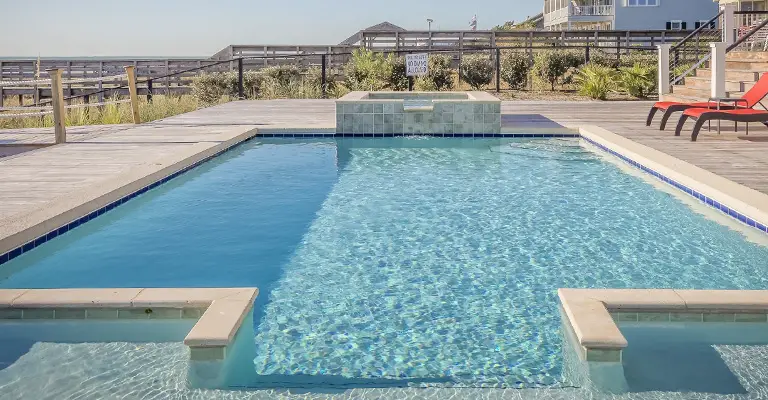The slimy feel of the water in your pool indicates that the chlorine isn’t working well and that you need to change the water.
It is a clear indication that your pool’s water is dirty when the water appears oily or slimy. To ensure the safety of your pool, shock it now.
Try dipping your hands into the pool’s water. Are you feeling oily or slimy? It’s time to do a little research to see why your swimming pool is starting to feel more like a slippery slide than a pool where you can splash and swim laps.
Why Are the Walls and Floor of My Pool Very Slimy and Slippery?
There are a variety of factors that can cause slippery pool walls and floors, such as poor water chemistry or algae and bacteria.
In order to prevent dangerously slippery pools, you should determine the cause of the problem and carry out regular pool maintenance. Slimy and slippery pool walls and floors can be caused by four different factors.
1. Algae Growing in the Pool
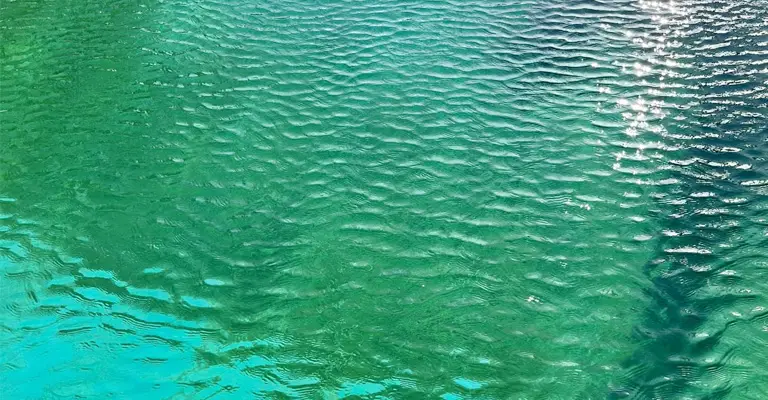
You can tell if algae are growing on your pool walls by the slimy feel they give off. Taking action early will prevent the algae from multiplying and becoming a much bigger issue.
You should clean your pool filter before adding any chemicals to your pool to prevent algae growth. The circulation of chemicals is improved when the filter is clean, and bacteria are prevented from growing.
In order to clean their filters, cartridges, sand, or diatomaceous earth each have their own backwash method. As a result of backwashing, dirt and debris that have accumulated over time are flushed from the filter.
2. Out-of-Control Bacterial Growth
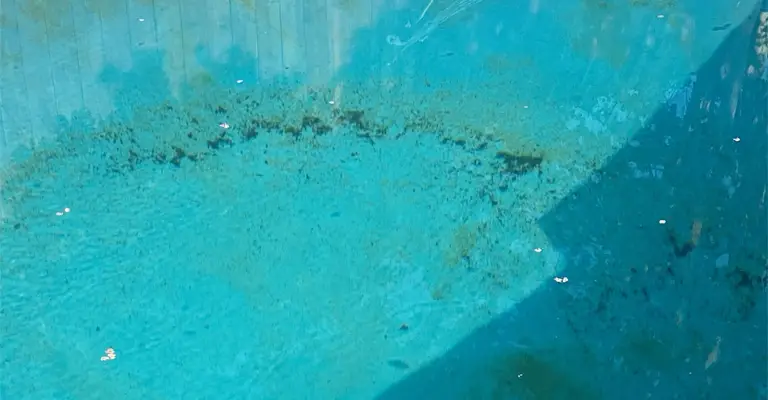
Microorganisms like algae thrive in waters contaminated with bacteria. There is no doubt that slime is a sign that bacteria have taken over and need to be controlled. Cleaning and shocking the pool will help you prevent this.
The pool walls and floors should be brushed with a pool brush to keep them clean. Once the water is prepared, add a shock treatment based on the volume of water in your pool.
It is possible to apply shock treatments both in granular and liquid forms, and they quickly kill bacterial growth while bringing sanitizing levels up.
3. Water Is Too Warm
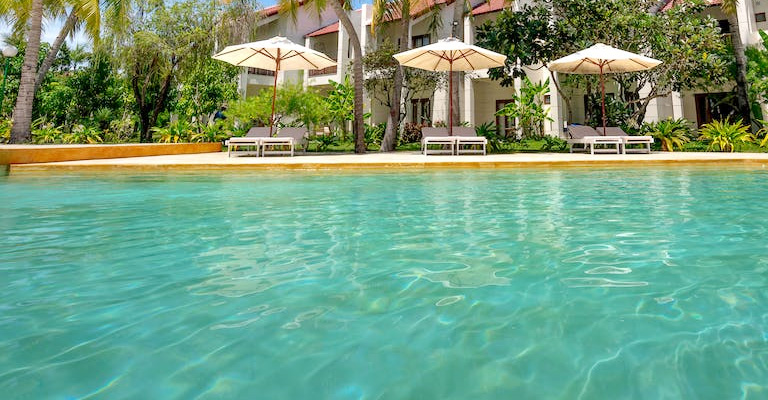
It is recommended that you run the filter after you have backwashed it. You can test your pool with a test kit or strips, both of which can be found at most pool supply stores.
Analyze the water chemistry and determine what aspects need to be adjusted, including pH levels and chemical composition.
When temperatures rise above the normal range, such as during a heat wave, water feels slimy.
Water dissolves chlorine faster at warmer temperatures. If the testing kit indicates that it is out of range, add enough chlorine to bring it back into range.
4. Not Using Algaecide Correctly
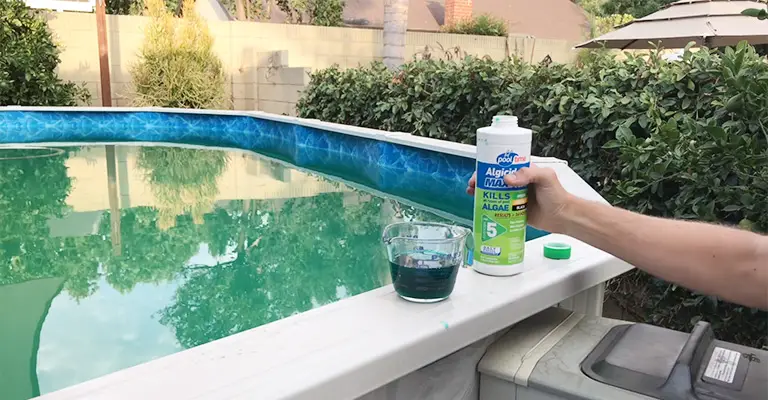
You should use algaecide on a regular basis as part of your pool maintenance plan, according to pool supply retailers.
The common misconception about algaecide is that it is only effective once algae have bloomed in your pool. It isn’t true – algaecide works best in conjunction with regular maintenance to prevent algae growth.
You should use algaecide regularly if you have slimy pool walls. It should be added weekly or after every shock treatment.
The use of algaecide will only benefit your pool, not hurt it. It’s best not to add too much because it will cause suds in your pool.
What Can I Do?
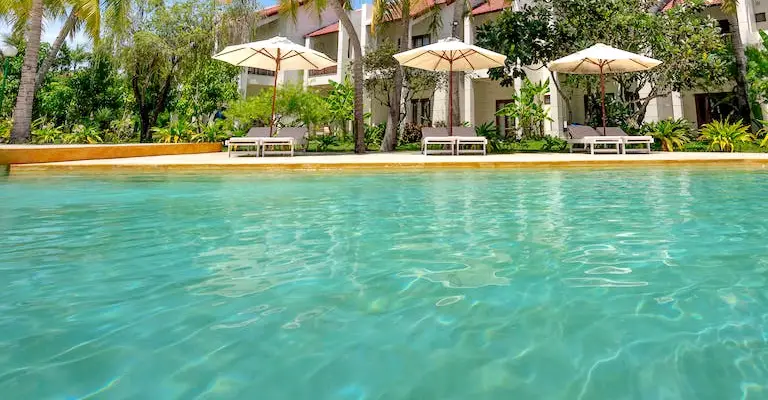
A balanced chemical solution and correct chlorine levels are essential for preventing algae growth in pools. It is recommended that the chlorine level be 3ppm, and the stabilizer level should not exceed 40ppm.
If your pool’s chlorine level drops too low, you will get green pools. As algae grows in your pool, the water’s color changes. During the summer months, algae can grow quite quickly.
The pool pump should not be grabbed just yet if the pool is green and slimy. Getting your pool clean and restored is as simple as following these steps.
Add Chlorine to Your Pool
“Shock” your pool. You can accomplish this by adding chlorine in the recommended dosages to your pool from a store.
The chlorine level should be checked every two to three days. It is important that the chlorine level in the water is at least 3ppm during this process in order to prevent algae regrowth
Make Sure The Pump Is Running
In order to maintain a green pool, your pump should run continuously for 24 hours, allowing new pool treatments to be effective at killing algae and preventing new algae from growing.
Clean the Filters
As part of the green pool recovery process, your filters should also be cleaned thoroughly until your pool is crystal clear.
For pools with a Media Filter (or Sand Filter), backwash the unit every 24 hours for 2 minutes. The filter elements of a Cartridge Filter will need to be cleaned every day if you are using one.
Vacuum the Pool
The dead algae will settle at the bottom of the pool once they have all died. There will be quite a bit of cloudiness in your pool during this process.
The dead algae will eventually settle to the bottom of the water after being suspended at different levels in the water.
It is possible to speed up the clearing process by using flocculants or clarifying agents, but it isn’t necessary since dead algae will always find their way to the bottom in time.
As soon as your pool is completely clear and all the algae has been removed, vacuum to waste. You should not vacuum through your filter, as dead algae is too fine to be caught, and your pool will appear cloudy once again.
For your pool to look perfect again, you may need to vacuum it 2-3 times. To keep your pool squeaky clean, you need to restore a green pool and maintain it regularly.
Use a Shock Treatment
To kill algae, you need to raise the chlorine level way above the normal level in your pool. During the process of killing algae, chlorine becomes used or spent, and its parts per million quantity in your pool will decrease significantly.
Pools are shock treated by adding a large amount of chlorine. This is known as “Super Shock”, “Shock Treatment”, or “Shocking Your Pool”.
It is a great idea to use store-bought shock treatments to kill algae, but it is important to follow the directions carefully.
The shock treatment should also be avoided for a few days since high chlorine levels can be harsh on the skin, cause irritation or respiratory problems, especially in young or elderly people.
Remove Debris
When cleaning your pool yourself, you should start by grabbing your pool net and removing all debris, including leaves.
In addition to removing floating algae, you can also scoop up small pieces of algae using the net.
Brush Your Pool
Swimming pools can become very slippery and dangerous when algae adhere to their sides. By brushing your pool down with a quality pool brush, you will be able to remove as much of this slimy surface as possible.
Vacuum Your Pool
When you brush your pool, you might have loosened debris and algae that you can vacuum up using your pool pole and vacuum head.
Final Words
Keeping a pool clean can be challenging if you don’t know what products to use or what strategies to employ. The skin can also be adversely affected by some algae treatments found in stores.
If you want your green pool cleaned and slime removed, hire a professional pool cleaning and maintenance service. The experts use the most effective treatments to eliminate algae growth in your pool and restore its balance using advanced technology.
You can also hire reputable pool cleaners to maintain your pool and restore green pools. You can always expect clean, crisp water when you have a professional company handle your pool.

